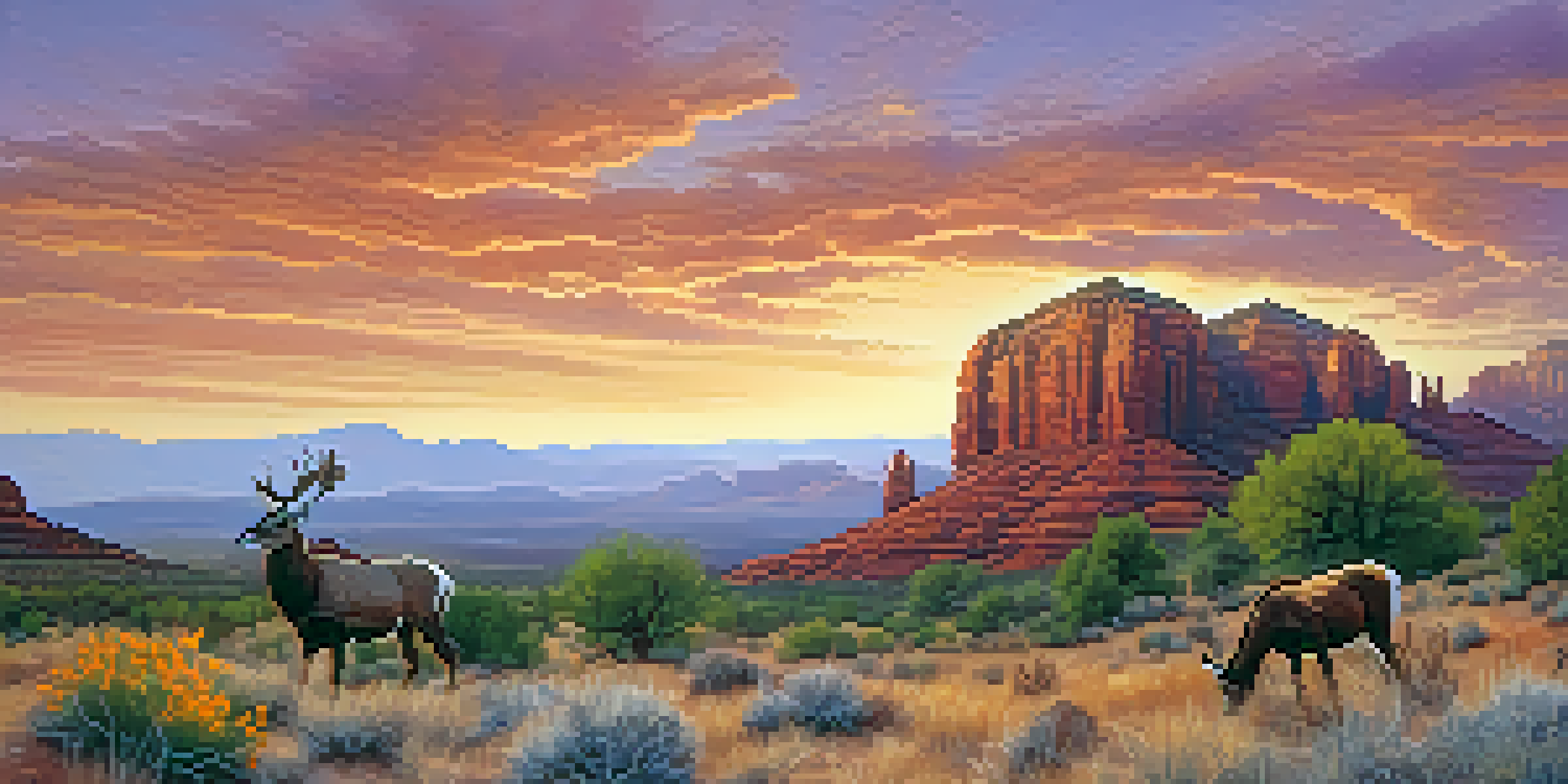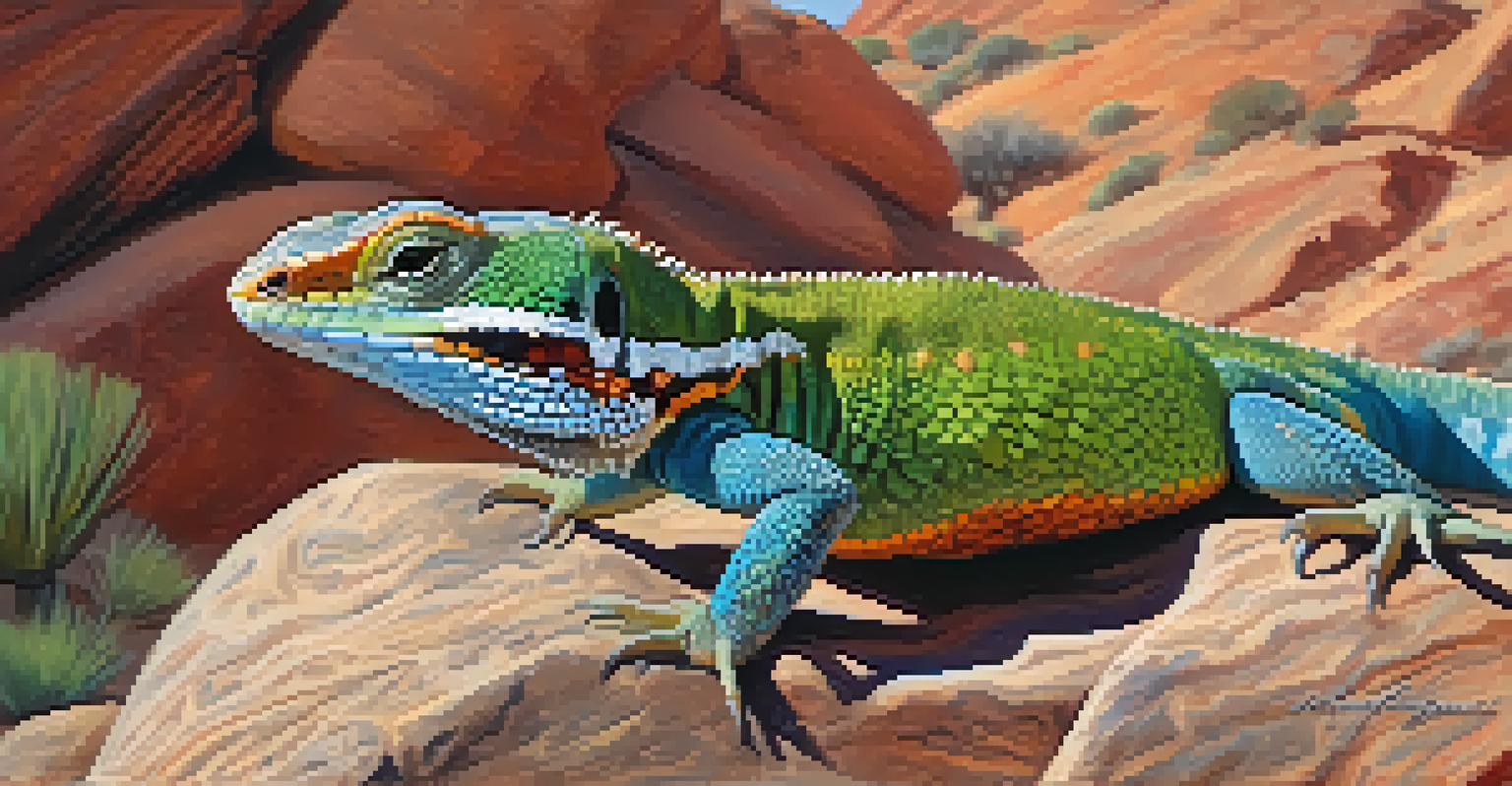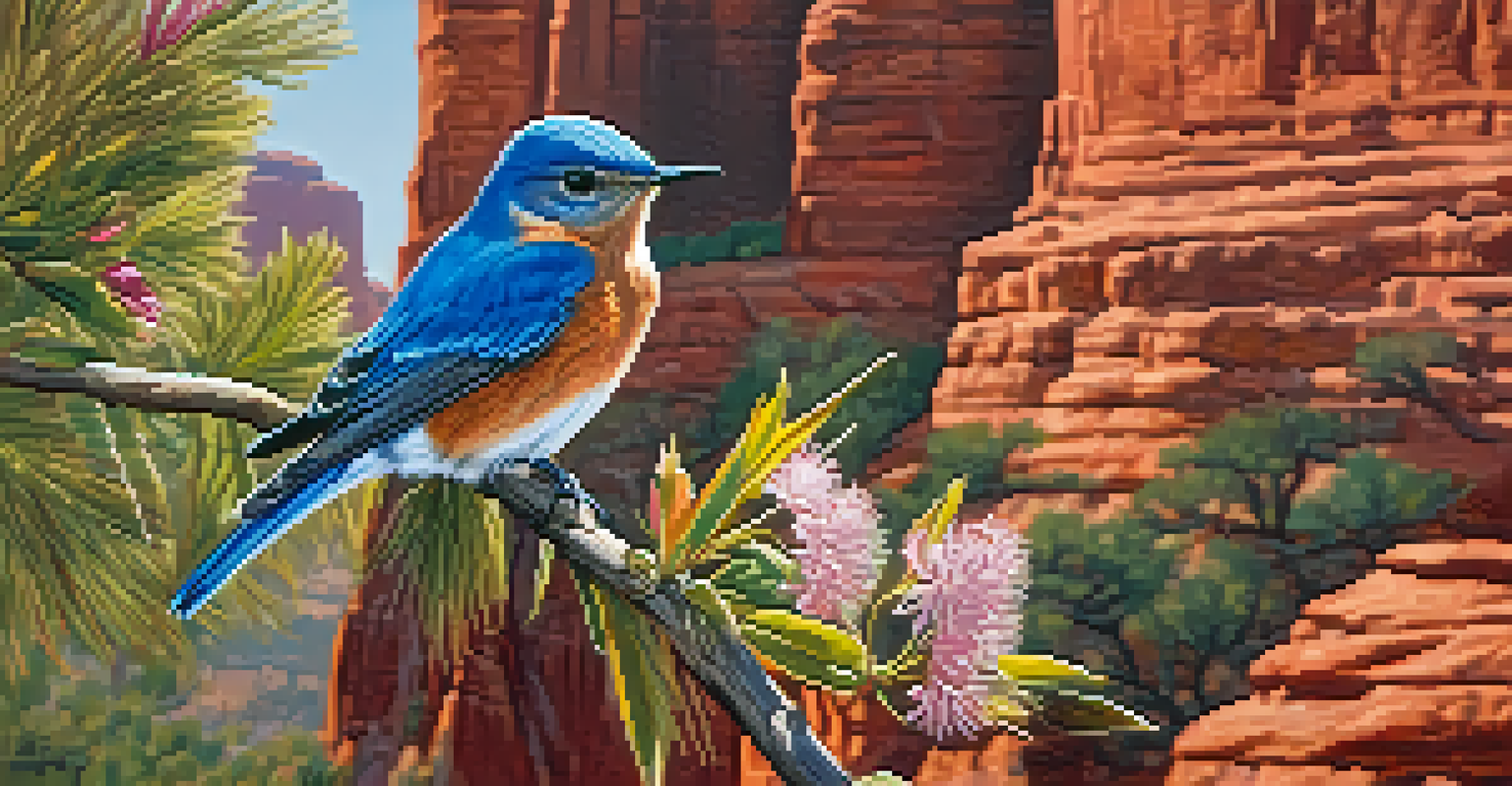Exploring Sedona's Unique Wildlife: An Ecological Overview

Introduction to Sedona's Ecological Diversity
Sedona, Arizona, is renowned for its stunning red rock formations and vibrant arts scene, but it's also a treasure trove of wildlife. Nestled within the Coconino National Forest, this unique landscape provides a rich habitat for a variety of species. The region's diverse ecosystems, ranging from high desert to lush riparian zones, create ideal conditions for both flora and fauna to thrive.
In every walk with nature one receives far more than he seeks.
As you explore the area, you'll encounter a fascinating mix of wildlife, including birds, mammals, reptiles, and insects. Each species plays a vital role in maintaining the ecological balance of this stunning environment. Understanding these dynamics can enhance your appreciation of Sedona's natural beauty and the importance of wildlife conservation.
In this article, we'll delve deeper into Sedona's unique wildlife, examining the different species that inhabit the area and the ecosystems they rely on. Whether you're a nature enthusiast or a casual visitor, there's much to discover about the rich biodiversity that Sedona has to offer.
Key Mammals of Sedona's Ecosystems
Sedona's wildlife is home to a variety of mammals, each uniquely adapted to their environment. Common sights include mule deer gracefully navigating through the forests and javelinas roaming the desert landscapes. These animals not only add to the area's charm but also play essential roles in their ecosystems, such as seed dispersal and vegetation control.

Larger mammals, like mountain lions and black bears, also inhabit the region, though they're more elusive. Mountain lions, in particular, are crucial for managing populations of smaller mammals, helping to maintain a balanced food web. Observing these creatures in their natural habitat can be an awe-inspiring experience, reminding us of the wildness that still exists in our world.
Sedona's Rich Ecological Diversity
Sedona boasts a variety of ecosystems that support a wide range of wildlife, from mammals and birds to reptiles and insects.
Smaller mammals, including foxes and rabbits, contribute to the ecological tapestry of Sedona. Their behaviors and interactions with other species are integral to the health of the ecosystems. Each mammal, no matter its size, plays a part in the intricate web of life that makes Sedona so special.
Birdwatching: A Paradise for Avian Enthusiasts
For birdwatchers, Sedona is nothing short of paradise. The region is home to a remarkable variety of bird species, thanks to its diverse habitats. From the striking red-tailed hawks soaring above the cliffs to the vibrant hummingbirds flitting among the wildflowers, there's always something to observe.
The clearest way into the Universe is through a forest wilderness.
Migratory birds also flock to Sedona during their seasonal journeys, adding to the area's avian diversity. Notable species like the American kestrel and the western bluebird can be spotted throughout the year. This influx of birds provides birdwatchers with opportunities to witness unique behaviors and interactions.
Understanding the importance of preserving these habitats is crucial for maintaining Sedona's rich birdlife. Conservation efforts help ensure that future generations can continue to enjoy the sights and sounds of these beautiful creatures. So, whether you're an experienced birder or a novice, grab your binoculars and get ready for an unforgettable experience.
Reptiles and Their Role in Sedona's Biodiversity
Sedona's warm climate and varied landscapes make it an ideal home for numerous reptiles. From the colorful collared lizard to the elusive Gila monster, these creatures play significant roles in the ecosystem. Reptiles are often seen basking in the sun or blending into the rocky terrain, showcasing their remarkable adaptations.
Snakes, such as the harmless gopher snake and the venomous rattlesnake, are also part of Sedona's reptilian community. These snakes help control rodent populations, illustrating the interconnectedness of species in maintaining ecological balance. It's essential to respect their space and observe them from a safe distance to appreciate their role in the ecosystem.
Importance of Wildlife Conservation
Local organizations and conservationists are dedicated to protecting Sedona's unique wildlife and habitats from threats like climate change and invasive species.
By understanding and appreciating the reptiles of Sedona, we can foster a greater respect for all wildlife. These fascinating creatures are not just a part of the landscape; they are vital contributors to the health and diversity of Sedona's ecosystems, reminding us of the delicate balance of nature.
Insect Diversity: The Unsung Heroes of Sedona
While often overlooked, insects are a critical component of Sedona's ecosystems. From pollinators like bees and butterflies to decomposers such as beetles, these tiny creatures play essential roles in maintaining ecological health. Insects support food webs and contribute to plant reproduction, making them indispensable to the environment.
One of the most fascinating aspects of Sedona's insect life is the variety of adaptations they've developed to survive in this unique landscape. For instance, some insects have evolved to withstand extreme temperatures, while others have developed camouflage to evade predators. Observing these adaptations can deepen our understanding of nature's ingenuity.
Encouraging a healthy insect population is vital for preserving Sedona's biodiversity. By planting native flowers and minimizing pesticide use, residents and visitors can create inviting habitats for these essential creatures. Remember, every small action contributes to the larger effort of protecting our planet's ecosystems.
Conservation Efforts in Sedona
Sedona's rich biodiversity is not without its challenges. Habitat loss, climate change, and invasive species pose significant threats to the wildlife that call this area home. However, local organizations and conservationists are actively working to protect and restore these ecosystems, ensuring that future generations can enjoy Sedona's natural beauty.
Efforts include habitat restoration projects, educational programs, and wildlife monitoring initiatives. By raising awareness about the importance of preserving Sedona's unique wildlife, these organizations are fostering a sense of stewardship within the community. Engaging local residents and visitors in conservation efforts is key to creating a sustainable future.
Tips for Wildlife Enthusiasts
Visitors can enhance their wildlife experience in Sedona by respecting natural habitats, observing from a distance, and participating in guided tours.
As individuals, we can also play a role in conservation. Simple actions like respecting wildlife habitats, practicing responsible outdoor recreation, and supporting local conservation initiatives can make a meaningful difference. Together, we can help protect Sedona's incredible wildlife for years to come.
Experiencing Sedona's Wildlife: Tips for Visitors
If you're planning to explore Sedona's unique wildlife, there are several tips to enhance your experience. First, consider visiting during early morning or late afternoon, when animals are most active. Bring binoculars to spot birds and other wildlife from a distance, minimizing disturbance to their natural behaviors.
Staying on designated trails not only protects the landscape but also helps you observe wildlife safely. It's important to remember that we are visitors in their home, so maintaining a respectful distance is crucial. Learning about the local flora and fauna will also enrich your experience, making your time in Sedona even more rewarding.

Finally, consider participating in guided tours or educational programs offered by local organizations. These experiences can provide valuable insights into Sedona's ecosystems and the wildlife that inhabit them. With a bit of preparation and respect for nature, your adventure in Sedona will be unforgettable.